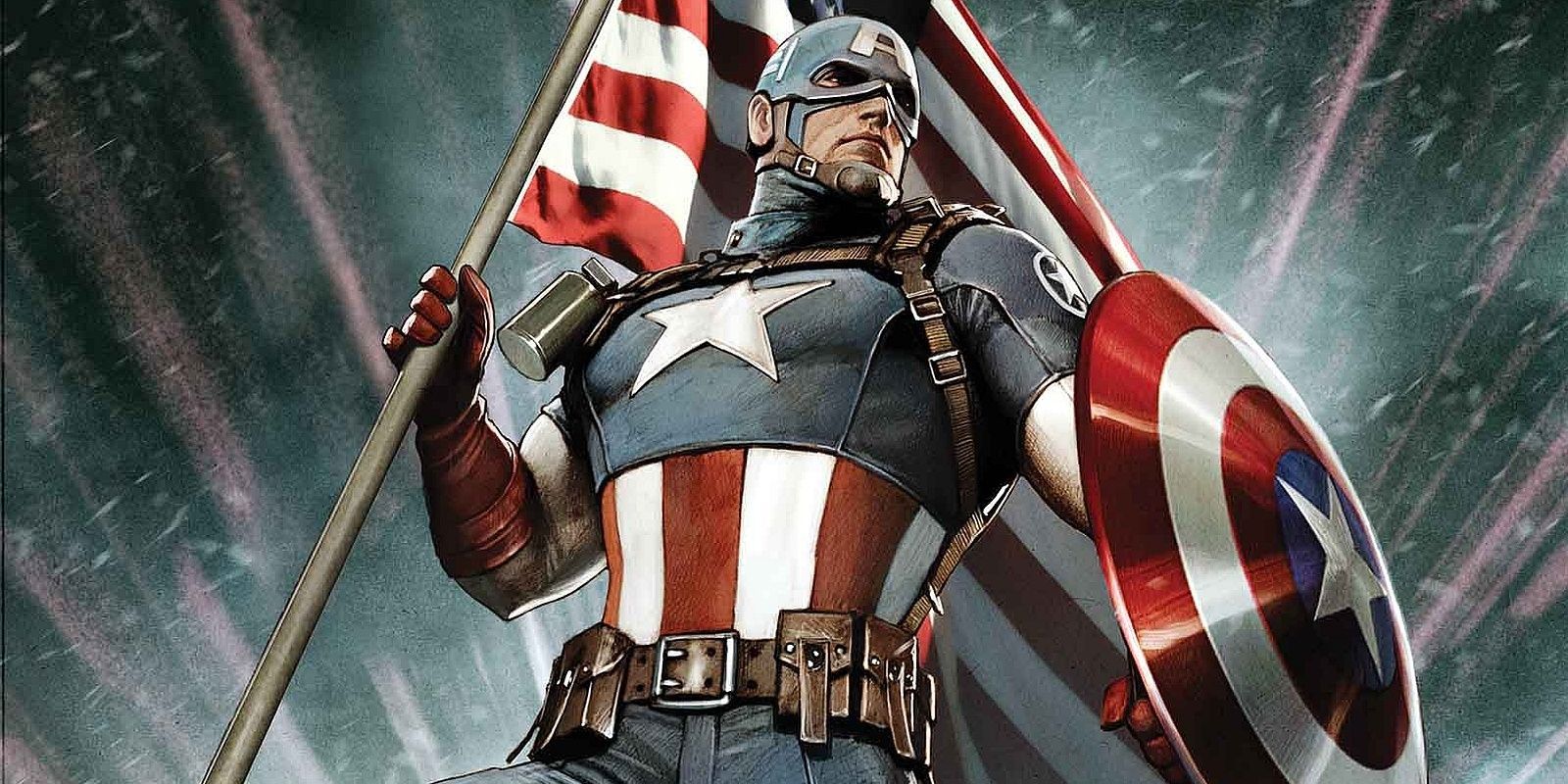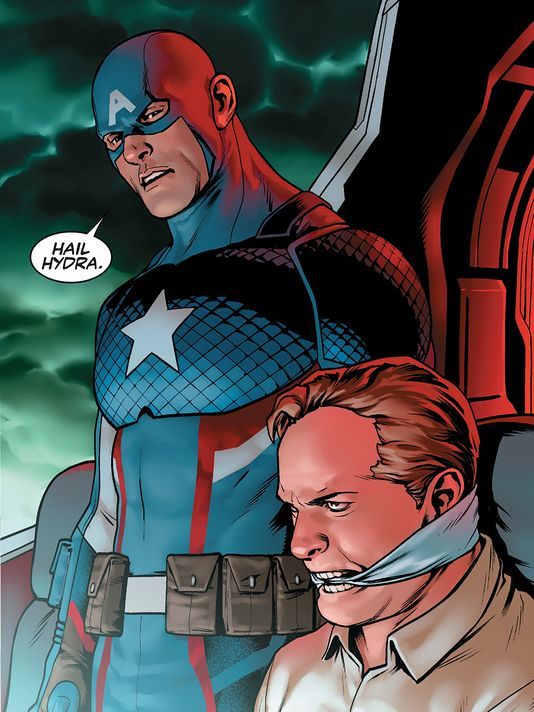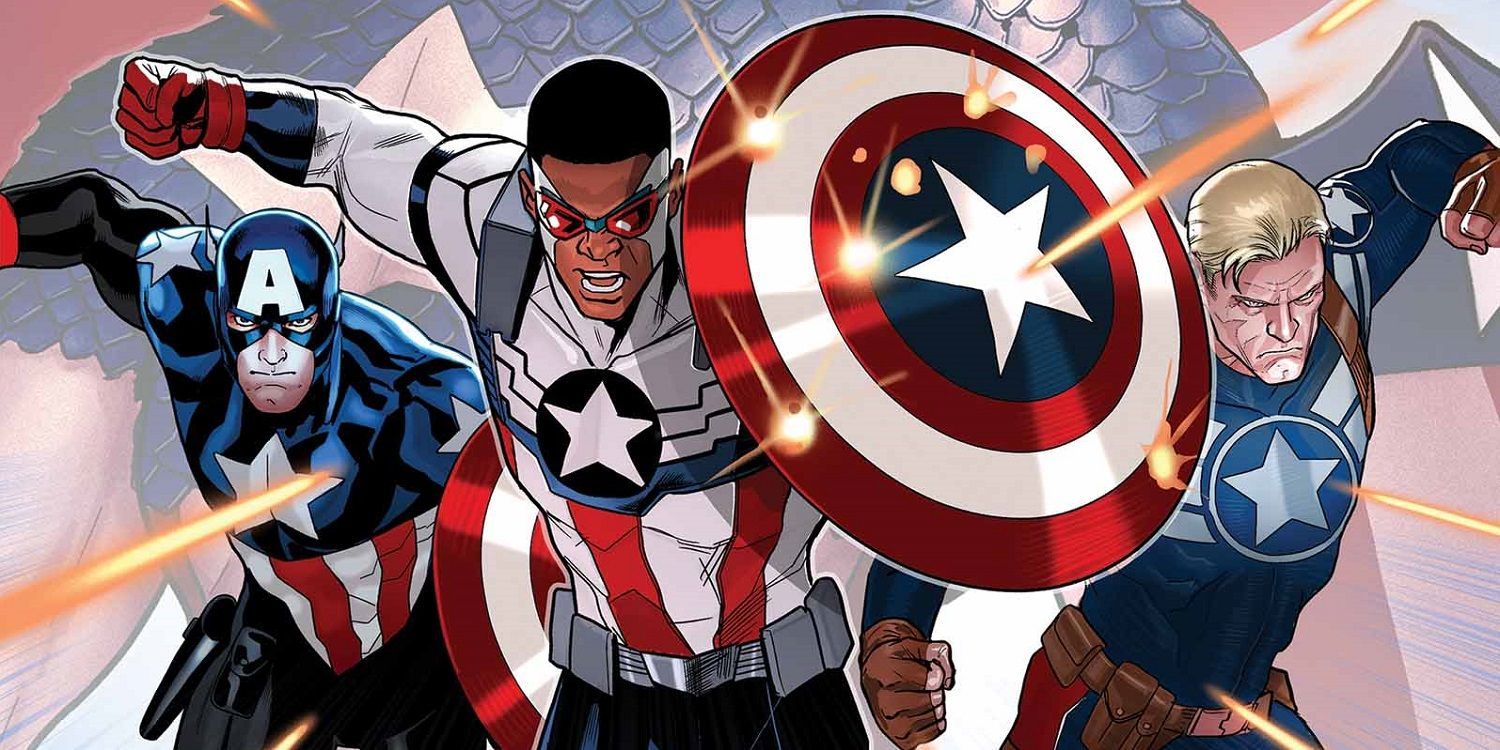This article contains MAJOR SPOILERS from Captain America: Steve Rogers #1
-
In life, there are certain certainties we cling to: the sky is blue, the sun rises in the east and sets in the west, and Steve Rogers' Captain America exists to protect and serve the world with shield, weapons-grade fists, and helmet at the ready. And Cap has had a good run in his 75 years, with his highly successful string of moves, including the box office champion Captain America: Civil War. But what if Captain America isn’t who we think he is?
Cap returns to the land of the living in Marvel’s All New, All Different Captain America #1. However, his resurrection may shock those who set their watch by the patriotic superhero.
USA Today brings surprising news from the Marvel realm. The reboot issue, written by Nick Spencer and Jesus Saiz, takes place in the aftermath of a major skirmish with Civil War baddie Baron Zemo. Following the battle, Rodgers betrays his former friend Jack Flag, proclaiming “Hail Hydra” before he throws him from a plane. Of course, initial thoughts are, this is a trick, Steve Rogers has been replaced by a clone or a body-morphing Skrull – or even a parallel version of Cap. Unfortunately, Marvel executive editor Tom Brevoort says no such trickery is involved. Brevoort discusses the controversial reveal:
“We knew it would be like slapping people in the face…His mission is to further the goals and beliefs of Hydra. If that involves taking down the Marvel universe, sure. (But) it may not be as simple as that. It’s not like he’s exchanged his white hat for a black hat – it’s a green hat.”
Further explanation comes in the form of a backstory, where it shows Hydra and its sinister head Red Skull recruiting poor and disenfranchised youths and adults in the 1920s. During that time, Rogers and his mother are pulled into the folds of the organization. Apparently, Rogers’ secret backstory will also tie in with Sam Wilson’s christening as Captain America as well as his Cosmic Cube-based rebirth. Brevoort explains that the plot, although timely, wasn’t originally intended to reflect the disturbing climate in electoral politics today. In an EW interview, he teases more of the story arc:
“Well, it puts the readers one step ahead of most of the characters in the Marvel Universe, so that, in Hitchcock tradition, they’re aware that the most trusted and most respected superhero within the Marvel Universe is now a wolf among the flock, who could strike at any time.”
In the interview, writer Nick Spencer also delves into the play of expectations prevalent in the upcoming story:
“Captain America is not just one of the most recognizable faces in the Marvel Universe. He’s an inspiring figure, somebody who brings people together. Everybody here obviously gets that. What you hope is that this story, in its own very different way, highlights those things and only continues to elevate the character in importance, and only serves to illustrate how powerful that symbol is.”
Captain America’s villainous turn comes as part of a somewhat ludicrous if intriguing backstory – one which will be explained further in the second issue and beyond. As astonishing as the twist is, transitioning the beloved hero into a possible villain isn’t that far-fetched in the grand scheme of things. Marvel and its competitor DC have a long history of either temporarily killing off beloved characters or turning them evil (see Jean Grey as The Phoenix, Green Lantern as Parallax in the “Emerald Twilight” storyline, Jason Todd as Red Hood, etc.).
For all his graying over the years, though, Captain America has never been given a strictly villainous role (aside from in alternate-universes). While the move clearly reeks of gimmickry, Marvel usually has a good time with their good-gone-bad storylines. His turn will undoubtedly play a role in the upcoming Civil War II storyline, as well as making things very interesting as fans watch him deal with his unsuspecting colleagues. If Spencer and Brevoort play their plot cards right, in the long run, the controversial story line has the power to deconstruct the beloved character while reminding fans of Cap’s virtues.
Next: How Marvel Comics Split Its Heroes Apart For Civil War II
All New, All Different Captain America: Steve Rogers #1 is now available. Issue #2 hits stores June 29, 2016. Marvel’s Civil War II event kicks off in June 2016 and is scheduled to run through eight issues of a limited series (with spinoffs and tie-ins) in 12 books.



